

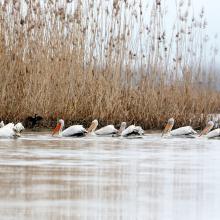
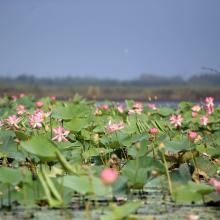

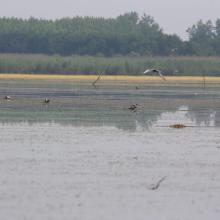
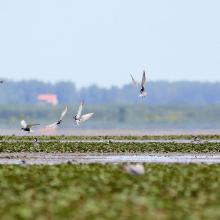
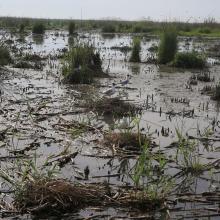
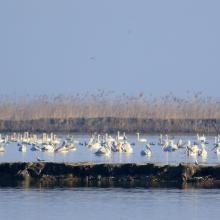
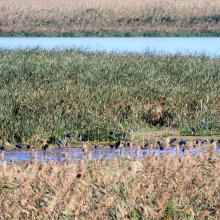
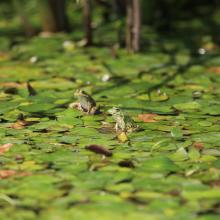
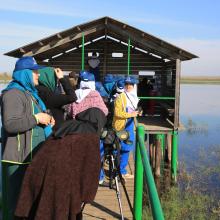
Anzali Wetland
- Country:Iran (Islamic Republic of)
- Site number:40
- Area:19,500 ha
- Designation date:23-06-1975
- Coordinates:37°26'N 49°24'E
Materials presented on this website, particularly maps and territorial information, are as-is and as-available based on available data and do not imply the expression of any opinion whatsoever on the part of the Secretariat of the Ramsar Convention concerning the legal status of any country, territory, city or area, or of its authorities, or concerning the delimitation of its frontiers or boundaries.
Overview
The Site is a large fresh lagoon fed by several rivers from the Talesh Mountains and separated from the Caspian Sea by a dune system. The permanent wetland is surrounded by seasonally flooded marshes which are mainly covered by reedbeds and floating-leaf plants and form vital habitat for waterbirds that migrate along the Afro-Eurasian and Central Asian flyways. Some 140,000 birds from 254 species have been recorded, among which the cormorants, terns, dalmatian pelican (Pelecanus crispus), gadwall (Anas strepera) and Eurasian teal (Anas crecca) constitute significant proportion of their regional population. 57 species of fish are found, including the critically endangered stellate sturgeon (Acipenser stellatus) and the vulnerable bulatmai barbel (Luciobarbus capito). Many of these fish migrate to the Site for spawning, including Caspian kutum (Rutilus kutum) and kura bleak (Alburnus filippii) which are endemic to the Sea and its drainage basins. The Site was placed on the Montreux Record in 1993 due to change in water levels, increased nutrient enrichment and hunting, and spread of the reed Phragmites australis and invasive water hyacinth. Several restoration measures have been implemented with international support to address these issues.
Administrative region:
Gilan Province
- National legal designation:
- protected area - Siahkesim Protected Area
- wildlife refuge - Chokum Wildlife Refuge
- wildlife refuge - Selkeh Wildlife Refuge
- wildlife refuge - Sorkhankol Wildlife Refuge
- Last publication date:13-04-2023
Downloads
Ramsar Information Sheet (RIS)
Archived RIS
Site map
Additional reports and documents
- Taxonomic lists of plant and animal species occurring in the site
- Site management plan
